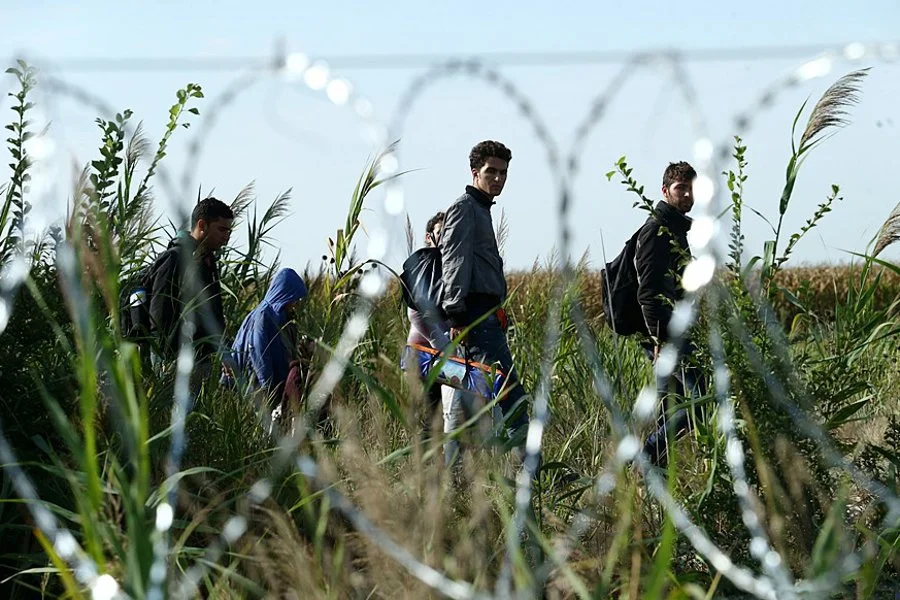A United Ireland: A Distant Possibility?
Last month a rather significant statistic from last year’s census was released by the Northern Ireland Statistics and Research Agency (NISRA). For the first time since records began, indeed since the creation of the Republic of Ireland and that of Northern Ireland, the census records showed that more Catholics than Protestants are currently living in Northern Ireland. For an island with a history such as Ireland’s, this is a momentous occasion. Having been split originally in 1921 down sectarian lines, the fact that Catholics now, one hundred years later, outnumber Protestants, is an astonishing fact. It is not, however, entirely surprising. The demographics within Northern Ireland have been slowly evolving over the last 29 years since the Northern Ireland Peace Process began in 1993. The catholic population of Northern Ireland has been increasing year on year, while the average age among the protestant population is rising, with the mortality rate subsequently increasing.
With these demographic changes, alongside the major political changes of the last six years, the situation on the island of Ireland is a dynamic and evolving one. These findings have sparked renewed questions around the future of a united Ireland. In 2021 the census found that 45.7% of the population were Catholic, up 0.6% from 2011 when the figure was at 45.1%. For Protestants, however, there has been a more dramatic shift. While 48.4% considered themselves protestant in 2011, only 43.48% answered as such in 2021, a fall of 5%. Moreover, the difficulties faced by the inhabitants of Northern Ireland over the Brexit Trade Deal, which effectively established a border between the island of Ireland and the island of Great Britain, also have their part to play in changing opinions on Irish and British Unionism. What is clear from the statistics is that the way the inhabitants of Northern Ireland identify themselves is changing. The number identifying as British only has decreased in the last ten years, while those identifying as Irish only has increased, as has the number of those identifying as both Northern Irish and British. This evolution is re-opening discussions around a united Ireland, what that might look like and how it might be achieved.
Nevertheless, politicians, including Leo Vradkar, the Tánaiste (Irish Deputy Prime Minister) are saying that the only way forward is a cautious one. At a recent conference, held in Dublin by the group Ireland’s Future, he emphasised the vital necessity of cross-community engagement in any successful attempt to unite Ireland. Not only is Ireland’s history a complicated and at times vitriolic one, it is also, in the main, a very recent history fraught with emotion, which directly and drastically affected many who are still alive and living there today. On the island of Ireland, even the term unionism is a loaded one. How does one go about uniting two separate entities where such key language is incendiary? It would certainly be no easy task.
Provision was made within the Good Friday Agreement in case a time such as this, when Northern Ireland and the Republic of Ireland would wish to reunite, might come. The power to arrange a referendum on the issue lies in the hands of the Secretary of State for Northern Ireland, Chris Heaton-Harris. The Northern Ireland Office have issued a statement saying that there is ‘no clear basis’ upon which to justify such a poll, although they are legally obliged to call one if a majority appears likely. Meanwhile, unionists point to one other key statistic; while the proportion of Catholics has greatly increased over the years, the percentage of those who identify as Irish only remains at 29%, an increase of 4% since 2011. Evidently, the religious demographics of Northern Ireland have changed, yet one can no longer use religion as a basis for judgements about people’s support for a united Ireland. If one looks to the proportion of those from Northern Ireland who identify as Irish only, the majority for a united Ireland simply does not yet exist. By this reasoning, to call a referendum now would only throw the whole island of Ireland into yet more turmoil, similar to that after the Brexit vote, but on an entirely different, more personal scale. With a peace as hard-won as that in Ireland, we cannot allow any post-referendum chaos to jeopardise it. Brexit was a long, protracted affair with much bickering between camps. Although a solution was found, it most definitely did not suit everyone, but emotions did not run nearly as high as they would in any discourse surrounding a united Ireland – that would require much more delicacy from our politicians.
While this statistic showing Catholics outnumbering Protestants in Northern Ireland has grabbed headlines, both in the Republic of Ireland and in the United Kingdom, the reality is that neither the British nor the Irish government thinks now is the time to be seriously considering a border poll. Things are changing in Northern Ireland, there is no doubt about that, and we could well be having a very different conversation in 2032, but, for now, Northern Ireland is remaining in the United Kingdom. For now, the answer is not no, but it is not yet.
Image courtesy of Mith via Wikimedia, ©2011, some rights reserved.
The views and opinions expressed in this article are those of the author and do not necessarily reflect those of the wider St. Andrews Foreign Affairs Review team.



